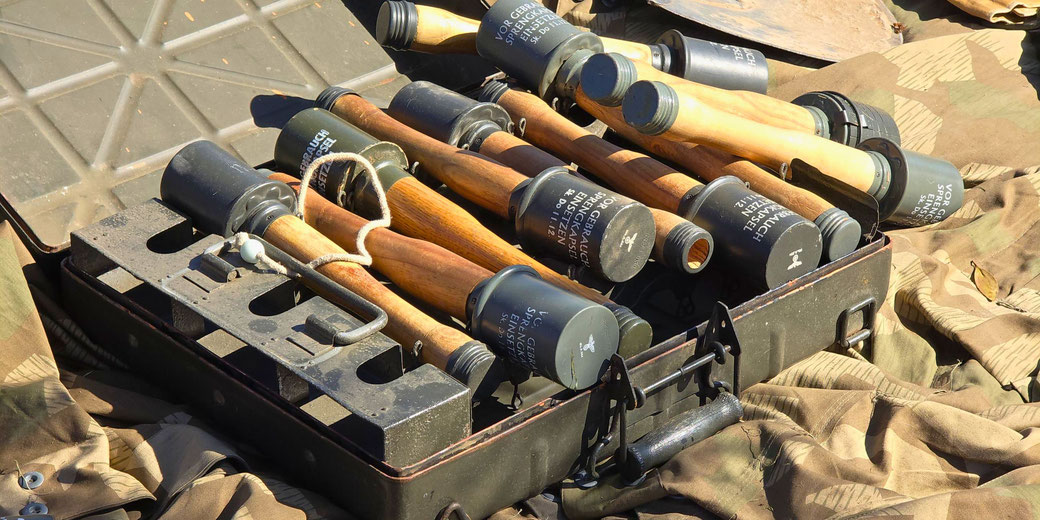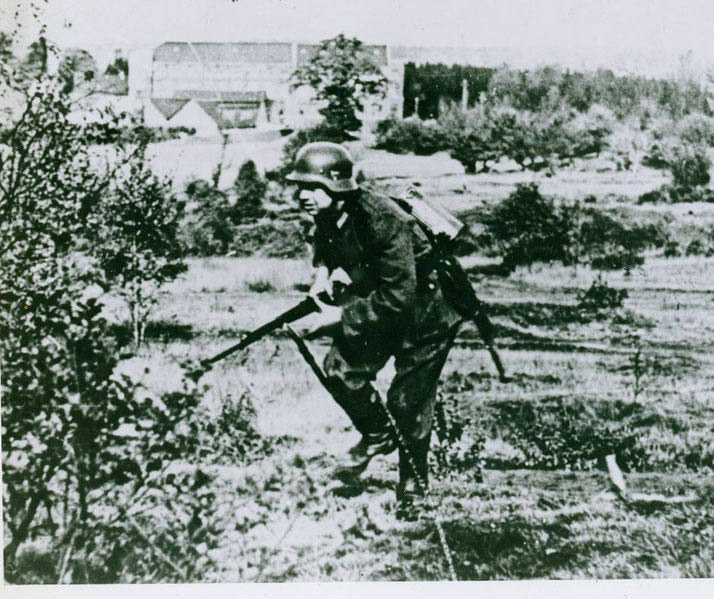Why it only took six weeks for Hitler to defeat France in 1940

How did one of the most powerful nations in Europe collapse in just six weeks? In May 1940, as Nazi Germany unleashed its Blitzkrieg across the continent, France found itself caught in a whirlwind of chaos and defeat.
The French army, who believed that they were secure behind the Maginot Line, crumbled under the rapid German advance.
Cities that had withstood the battles of World War I fell one after another, while the French leadership grappled with uncertainty and fear.
Within weeks, Paris was occupied, and the government was forced to make a choice between surrender or annihilation.
So, what led to such a swift and devastating fall?
How France was lulled into a false sense of security
Following Germany's invasion of Poland on the 1st of September 1939, Britain and France had declared war, which officially began World War II.
British military commanders expected a rapid attack towards France, so sent the British Expeditionary Force (BEF) to help defend France and Belgium over the winter of 1939–40.
However, there was no sign of a German attack. In fact, for the rest of the winter, the Allies prepared their defensive strategy but did not invade Germany.
Since there was no fighting during this time, this period became known as the ‘Phoney War’.
In April of 1940, German forces invaded Denmark and Norway. Denmark surrendered immediately, while Norway fought back until it was conquered on the 10th of June.
The German invasion plans
Adolf Hitler was surprised when Britain and France declared war in September 1939 and was not entirely prepared for battle.
However, during the 'Phoney War' period, he had to develop a military strategy for victory.
He planned a rapid German attack into the Netherlands and Belgium. This strategy was called Blitzkrieg, which meant ‘lightning war’.
It relied upon the German forces striking as fast as possible with as much power as possible, to overwhelm the defenders and keep them retreating.
This would only work with coordinated movements of tanks, artillery, infantry and aircraft.
It was theorised by German military planners that Blitzkrieg would be successful if it could stop the enemy from reorganising and counterattacking.
To maximise the success of this attack, the Allies had to be caught off guard and attacked on multiple fronts.
Maurice Gamelin, the French commander-in-chief, had planned France's defense based upon a line of defensible structures along France's border with Germany.
One structure was known as the Maginot Line, which was a concrete-enforced line of bunkers, artillery emplacements, and underground facilities that was over 450 kilometers long.
It was so heavily fortified with that it was considered almost impossible for the Germans to capture without huge loss of life.
The other was the Ardennes Forest, which was considered a less likely route for a major invasion primarily because of its rough terrain and narrow roads, and the thickness of the forest.
The Allies believed it would be difficult for a large, mechanized army to move quickly through the Ardennes.
Since these locations were considered to be strong enough already, most Allied forces were located to the north, in and around Belgium.
How the German invasion caught France off guard
The German army finally launched their attack, known as the 'Manstein Plan' or 'Sichelschnitt', on the 10th of May 1940 when Nazi forces moved into the Netherlands and Belgium.
However, this was a trap, as Hitler hoped that the Allies would move against this force.
As Germany hoped, the Allied forces did move north in large numbers to stop them.
They did not move fast enough to defend the Netherlands, as the country surrendered on the 15th of May.
However, as the Allies were moving north, they didn't notice a second German invasion force, located to the south of their position.
On the same day as the first German army had attacked, the second force, under General Heinz Guderian, had led a rapid armored push through the Ardennes and into France.
They had moved with such incredible speed that they had reached the river Meuse at Sedan in France on the 13th of May.

Before the Allies had time to respond, this second force moved towards the coast, which cut off the British and French forces from the rest of France.
The Allied army was now surrounded by the two German armies. The two Nazi invasion forces now moved towards the Allies from both directions, hoping to surround them and force them to surrender. This was called a 'pincer movement'.
The Allied troops continued to withdraw from the two enemy armies and tried to make their way to the coastline where they hoped some ships would be able to evacuate some men before they had to surrender.
By the 26th of May, all the key French and Belgian ports, such as such as Calais, had been captured by the Germans, except for Dunkirk.
And that is where the Allied forces headed.
The Dunkirk evacuation
By the end of May 1940, most of the BEF and the French army were trapped in and around Dunkirk.
They set up defensive positions to hold off the Germans for as long as possible, as they waited for some kind of evacuation by sea.
Back in Britain, there had been a flurry of dramatic changes in government. On the same day that the Germans launched their invasion of France and the Low Countries, Winston Churchill had suddenly been appointed as the new Prime Minister of the United Kingdom.
Churchill immediately realised the fact that the entire British and French armies were on the verge of surrender, he came up with a plan to save as many as possible.
It was called 'Operation Dynamo', and it would involve using every ship available to save as many soldiers as possible. It was to be coordinated by the Royal Navy's Vice-Admiral Bertram Ramsay.
The operation began on the night of the 26th of May. The army managed to fight off the German advance for nine days, which allowed a constant flow of ships to travel between Dunkirk and England, carrying as many men to safety as possible.
As the evacuations continued, the defensive lines around Dunkirk were gradually collapsing and the German forces inched closer to the beaches.
Not only were Royal Navy ships used, but also privately-owned transport craft and smaller civilian boats volunteered for the task.
In total, over 900 ships took part in the operation. German artillery and aircraft constantly attacked the men on the beach and the ships but were unable to stop the evacuation taking place.
By the evening of the 4th of June, 338,226 soldiers, including 198,000 British and 140,000 French troops, had been successfully evacuated to England.
It was far more successful than Churchill had expected, and it meant that the Allied forces did not have to surrender to Germany.
Operation Dynamo is still the largest amphibious evacuation to happen during wartime conditions.
However, while the evacuation meant that the Allied forces did not have to surrender, it did mean that there was now no longer an Allied army in France to fight back against the German forces.
France was left undefended.
The painful decision to surrender to Hitler
Following the eventual capture of Dunkirk, the German Army moved south into France on the 6th of June 1940.
One army headed into north central and west central France, while the other moved against the Maginot Line.
The French government, which was led by Prime Minister Paul Reynaud, was deeply divided over whether to continue fighting or to seek a peace deal.
However, the situation quickly deteriorated for France. As the German forces moved south, the fortresses that made up the Maginot Line gradually fell one by one.
Then, on June 14, 1940, other German forces marched into Paris, and the French capital fell without much resistance.
So, France formally surrendered to Hitler on the 22nd of June 1940 by signing an armistice.
It was a humiliating defeat for France. It had suffered approximately 90,000 deaths during the six-week campaign, and over 2 million French soldiers were taken prisoner by the Germans.
As a result of the armistice, France was allowed to retain government of the southern half of the country from the city of Vichy, which is why it is often known as the 'Vichy government'.
Marshal Philippe Pétain was appointed as Head of the French State of the new regime, and while it declared itself to be independent, in reality, it was a collaborationist regime under German influence.
This division created a divided France, but ultimately, Germany exerted significant control and influence over the country.
Despite the surrender, French civilians and evacuated French forces would continue to fight for their freedom until the end of the war in 1945.
Further reading
What do you need help with?
Download ready-to-use digital learning resources
Copyright © History Skills 2014-2025.
Contact via email
With the exception of links to external sites, some historical sources and extracts from specific publications, all content on this website is copyrighted by History Skills. This content may not be copied, republished or redistributed without written permission from the website creator. Please use the Contact page to obtain relevant permission.





